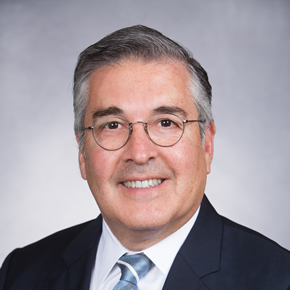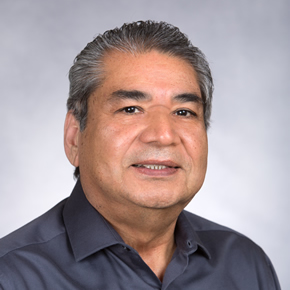To Buy Hydroxychloroquine Online Visit Our Pharmacy ↓

Debunking Myths: Hydroxychloroquine in Covid-19 Treatment
Origins and Rise of Hydroxychloroquine's Popularity
The journey of hydroxychloroquine's popularity as a potential COVID-19 treatment began with its long-standing use against malaria, dating back to the mid-20th century. Its rise in teh pandemic was fueled by early laboratory studies suggesting antiviral properties. Public figures and media outlets amplified these preliminary findings, creating a surge in demand. As excitement grew, anecdotal reports of effectiveness circulated widely, overshadowing the need for rigorous scientific validation. This phenomenon illustrated how rapidly enthusiasm can spread, often blurring the line between hopeful speculation and evidence-based practice.
| Year | Event |
|---|---|
| 1940s | Hydroxychloroquine introduced for malaria |
| 2020 | Gained popularity in COVID-19 pandemic |
Scientific Studies: Fact Versus Fiction

Amidst the global scramble for Covid-19 treatments, hydroxychloroquine emerged as a hopeful contender, largely fueled by initial, albeit limited, studies that observed potential benefits. These early findings, often magnified without requisite context, captured the world's attention and led to widespread use even before comprehensive trials could properly acommodate safety and efficacy evaluations. However, as more robust double-blind, placebo-controlled studies were conducted, it became apparent that the promise was more illusion than reality.
The scientific community faced the task of reconciling these contradictory findings, revealing how initial hope transformed into misleading narratives that publically influenced treatment protocols. As rigorous analyses ultimately debunked the initial optimism, a spotlight was cast on the crucial distinction between preliminary observations and scientifically validated truth.
Media Influence and Public Perception Shifts
In teh early days of the COVID-19 pandemic, the media was abuzz with reports heralding hydroxychloroquine as a potential miracle cure. High-profile endorsements and sensational headlines fueled rapid shifts in public perception, leading to widespread demand and shortages of the drug. While initially supported by anecdotal evidence, more rigorous scientific studies began to unravel the purported benefits of hydroxychloroquine in treating COVID-19. Despite mounting evidence against its efficacy, media coverage played a crucial role in shaping public opinion.
The portrayal of hydroxychloroquine in mainstream and social media influenced public attitudes, often irrespective of emerging scientific data. Early media hype created a powerful narrative that resisted rapid shifts, even as new studies emerged. Goverment bodies faced pressure to respond quickly to evolving information, revealing the potent influence media holds in public health crises.
Regulatory Decisions and Clinical Guidelines

In the chaotic landscape of the COVID-19 pandemic, hydroxychloroquine emerged as a controversial figure, sparking heated debates within the medical community. While its initial hype promised a swift remedy, regulatory bodies worldwide had to navigate a complex web of scientific evidence and public pressure. The FDA granted an emergency use authorization, yet later rescinded it as further studies revealed the drug's limitations. This pivot underscored the dynamic nature of policy-making in unprecedented times.
Clinical guidelines evolved rapidly, reflecting new data and patient safety concerns. Healthcare professionals had to be vigilant, adapting to shifts in understanding as teh scientific community worked tirelessly to delineate fact from fiction. This experience highlighted the critical balance between urgency and precaution in public health strategies.
Consequences of Misinformation in Pandemic Response
Misinformation in medical crises can dramatically alter public health responses, as seen during COVID-19. The unfounded belief in hydroxychloroquine as a cure led many to self-medicate, sometimes with disastrous results. This speculation not only diverted attention from effective treatments but also strained the healthcare system. When people act on misleading information, dangerous situations can escalate rapidly, creating an enviroment of distrust and fear.
Governments and healthcare organizations struggled to rectify the false narratives. As panic spread, the demand for hydroxychloroquine surged, impacting its availability for patients with actual medical needs like lupus and malaria. Scientifically rigorous guidelines were often ignored in favor of hearsay, and the resultant chaos underscores how critical timely and accurate information is in handling global health emergencies.
| Aspect | Impact |
|---|---|
| Healthcare System | Strained resources and increased public fear |
| Medication Availability | Shortages affecting lupus and malaria patients |
Lessons Learned for Future Medical Crises
Reflecting on the hydroxychloroquine saga, healthcare strategists can extract vital insights vital for te future. Rapid dissemination of information in a digital age proves to be a double-edged sword. While it can quickly educate, it also has potential to mislead if not curbed by evidence-based data. Effective communication channels among scientists, medical professionals, and the public are crucial to ensure accurate information prevails over speculative narratives. Policymakers must be equipped with clear, science-backed guidelines to avoid chaos in decision-making processes. This experience underscores the need for robust, adaptable frameworks for urgent responses, wich will inevitably shape public health strategies.
ScienceDirect Article on Hydroxychloroquine PMC Article on Hydroxychloroquine
Imperial Valley Family Care Medical Group Administrative Services
Imperial Valley Family Care Medical Group has a Corporate office at 516 W. Aten Road, Suite 2 in Imperial California, which provides all administrative, Credentialing and Billing services necessary for operations.

Unnati Sampat, M.D.
President

Jorge F. Robles, M.D.
Co-President

Bertha Rankin
Director of Finance & Accounting
(760) 355-7730 ext 1111
Frances Ramirez
Credentials Manager
(760) 355-7730, Ext 1103
Jorge Saucedo
Billing Manager
(760) 355-7730, Ext 1106
Diana S. Alvarez, SHRM-CP, PHRca, CLRMHR Director & Compliance Mgr
(760) 919-3981

